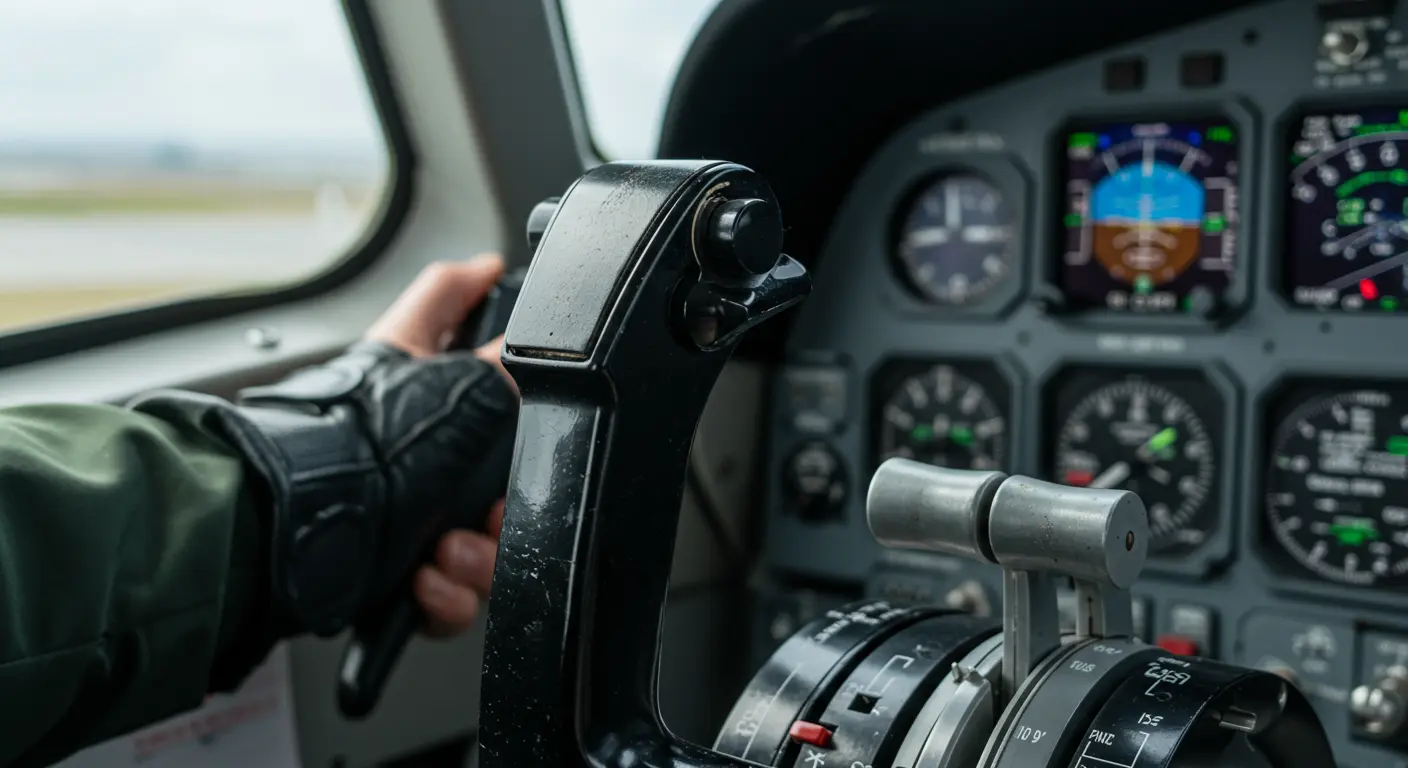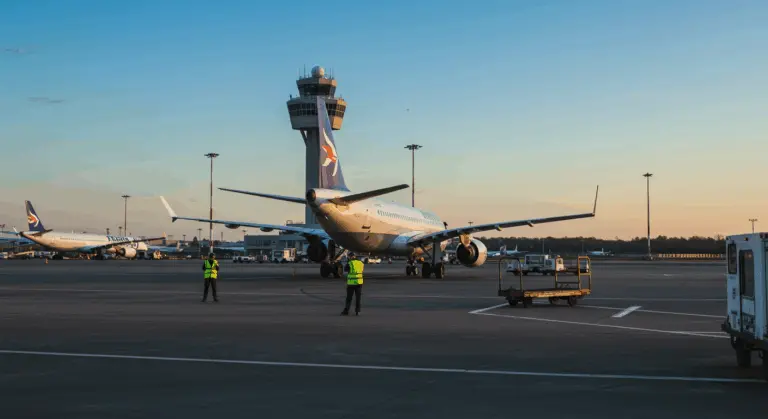Elevator Trim Stall: Understanding and Prevention
What is an Elevator Trim Stall?
An elevator trim stall represents a dangerous aerodynamic trap. When pilots apply full power while carrying significant nose-up trim—without adequate forward control pressure—the aircraft lurches into an excessive pitch-up attitude. This aggressive nose-high condition can quickly force the aircraft beyond its critical angle of attack, triggering a stall.
The elevator trim tab, though small, has significant impact on flight management. This diminutive control surface reduces the physical pressure pilots must exert to maintain specific elevator positions, greatly reducing cockpit workload.
Elevator trim functions through simple aerodynamic counterbalance. The trim tab deflects opposite to the desired elevator movement—when seeking a nose-up attitude, the tab moves downward, effectively pushing the elevator upward. This effective design minimizes the physical effort required to sustain consistent pitch attitudes.
Proper trim management is essential for efficient flight operations, reducing pilot fatigue. However, mismanagement during critical phases—particularly go-arounds—creates the risk of an elevator trim stall. The dangerous combination of high power and nose-up trim generates a strong pitching moment that, left unchecked, causes a stall.
Causes of Elevator Trim Stalls
What causes elevator trim stalls? Applying full power while carrying substantial nose-up trim, all without the crucial counteracting forward control pressure.
Go-arounds are the most common scenario for these incidents. Picture this scenario: a pilot transitions from a stabilized landing approach—typically configured with nose-up trim for controlled descent—to an urgent climb. The sudden power surge, combined with the existing trim configuration, creates a powerful, unwanted pitching moment that can catch even experienced pilots off guard.
Several aerodynamic phenomena amplify this dangerous pitching moment:
-
Propeller Slipstream: In propeller aircraft, increased power accelerates airflow over the tail, enhancing the effectiveness of the nose-up trim.
-
Torque and P-Factor: These effects from increased power also contribute to the aircraft’s tendency to pitch up.
Human error is behind most elevator trim stall scenarios. Pilots fall into predictable traps:
-
Failure to apply sufficient forward pressure on the yoke when adding power
-
Excessive nose-up trim setting prior to initiating a go-around
-
Delayed recognition of the rapidly increasing pitch attitude
-
Attempting to trim during the initial phase of a go-around rather than focusing on aircraft control
-
Inadequate monitoring of airspeed during the transition
Because of this risk, some flight instructors advocate against full trim usage during final approach. Their reasoning? In high-stress situations like go-arounds, even seasoned pilots might forget to apply the necessary forward pressure when advancing the throttles.
Elevator trim stalls are different from other stall types. Power-on stalls simulate departure scenarios. Power-off stalls replicate approach conditions. Accelerated stalls occur under high G-loads. But elevator trim stalls? They emerge specifically from the specific interaction between trim configuration and power application.
Preventing Elevator Trim Stalls
Preventing elevator trim stalls requires a multi-layered approach combining proper technique, heightened awareness, and thorough preparation. While some instructors recommend avoiding approach trimming altogether, a more nuanced strategy usually works better.
Good pilots use trim’s workload benefits during final approach while maintaining constant readiness to counteract its effects during power changes. This mental preparation is essential when go-arounds become necessary.
Key prevention strategies include:
-
Anticipate the need for forward pressure when adding power during a go-around
-
Begin rolling trim forward (nose-down) immediately after initiating a go-around
-
Avoid excessive nose-up trim settings that could overwhelm your ability to counteract with manual control inputs
-
Develop muscle memory for proper go-around procedures through regular practice
-
Maintain awareness of your trim setting throughout the approach phase
Thorough training should encompass go-arounds from diverse approach points and trim configurations. This varied practice creates real skill, developing the instinctive responses pilots need when confronting the strong control forces these situations generate.
Establishing personal approach trim limits provides additional protection. Rather than maxing out nose-up trim, a slightly more neutral setting provides important safety margins for potential go-arounds. The sweet spot? Reducing control pressure without creating overwhelming pitch-up tendencies when power gets applied.
Recovery Techniques for Elevator Trim Stalls
When an elevator trim stall develops, swift and decisive action is essential. The fundamental technique? Apply immediate, firm forward pressure on the controls to drive the nose down. This important action reduces angle of attack and prevents a full aerodynamic stall from developing.
The recovery sequence should follow these steps:
-
Apply firm forward pressure on the yoke to lower the nose and reduce the angle of attack
-
Consider reducing power initially rather than adding excessive power, which could exacerbate the nose-up tendency
-
Once the pitch attitude is under control, begin re-trimming to a more neutral setting
-
Gradually reapply power as needed while maintaining positive control of the aircraft
-
Establish a normal climb attitude and continue to adjust trim as necessary
Be prepared for the required forward pressure—it can be substantial, particularly with aggressive nose-up trim settings. Pilots must prepare to use both hands to overcome these forces, especially in aircraft equipped with manual trim systems.
Power management timing is very important during recovery. The natural instinct to slam the throttles forward can actually worsen the pitch-up tendency. A more measured power application, paired with firm control inputs, allows better recovery with minimal altitude loss.
Situational awareness is essential throughout recovery. Focus on the aircraft’s attitude relative to the horizon—don’t get trapped staring at instruments. External visual references provide immediate feedback, helping prevent over-controlling that could trigger secondary stalls or pilot-induced oscillations.
Post-recovery analysis is important. What triggered the stall? Excessive trim? Delayed recognition? Another factor entirely? This honest self-assessment helps technique improvement and prevents future occurrences.
The Role of the Pilot in Managing Stalls
Recognizing impending stall conditions is the pilot’s first line of defense. Stay alert for these critical warning signs that provide valuable advance notice for corrective action:
Multi-crew operations work better with effective Crew Resource Management (CRM). Clear communication about trim settings during briefings and precise go-around callouts create shared situational awareness. The pilot monitoring must remain vigilant, ready to call out excessive pitch attitudes before they become critical.
Common Errors Leading to Elevator Trim Stalls
Several common pilot errors contribute to elevator trim stalls:
Instrument fixation during go-arounds is especially dangerous. When pilots focus intently on airspeed indicators or configuration settings, pitch attitudes can increase unnoticed, setting the stage for a stall.
Delayed or improper trim adjustment makes things worse. During go-arounds, failing to promptly re-trim for nose-down attitudes forces pilots to battle heavy control pressures—a recipe for fatigue and eventual loss of pitch control.
Poor recovery technique can transform a manageable situation into a genuine emergency. Watch out for these recovery pitfalls:
-
Applying excessive forward pressure, potentially causing an overcorrection and secondary stall
-
Reducing power prematurely during recovery, which can lead to altitude loss
-
Failing to maintain coordinated flight with proper rudder inputs
-
Attempting to re-trim before establishing positive control of the aircraft
-
Releasing forward pressure too quickly after initial recovery
Conclusion: Key Takeaways on Elevator Trim Stalls
Elevator trim stalls are dangerous, striking when sudden power application combines with excessive nose-up trim to create rapid, uncommanded pitch-up moments. This hazardous condition—capable of pushing aircraft beyond critical angles of attack—most commonly catches pilots during high-workload phases like go-arounds.
Prevention is the best way to avoid elevator trim stalls. Follow these important steps:
-
Apply forward pressure when adding power in a go-around.
-
Maintain awareness of trim settings, especially on approach.
-
Promptly re-trim during the go-around transition.
-
Regularly practice go-arounds with varied trim settings.
-
Understand the interaction between power, trim, and control inputs.
Should a stall develop, recovery requires immediate action: apply firm forward pressure to lower the nose. Power reduction might be needed to regain control. Save re-trimming until after you’ve stabilized the aircraft’s attitude.
Mastering the aerodynamics, practicing correct techniques, and maintaining sharp situational awareness are the basis for effective trim stall management—essential for a safe and successful flying career.







